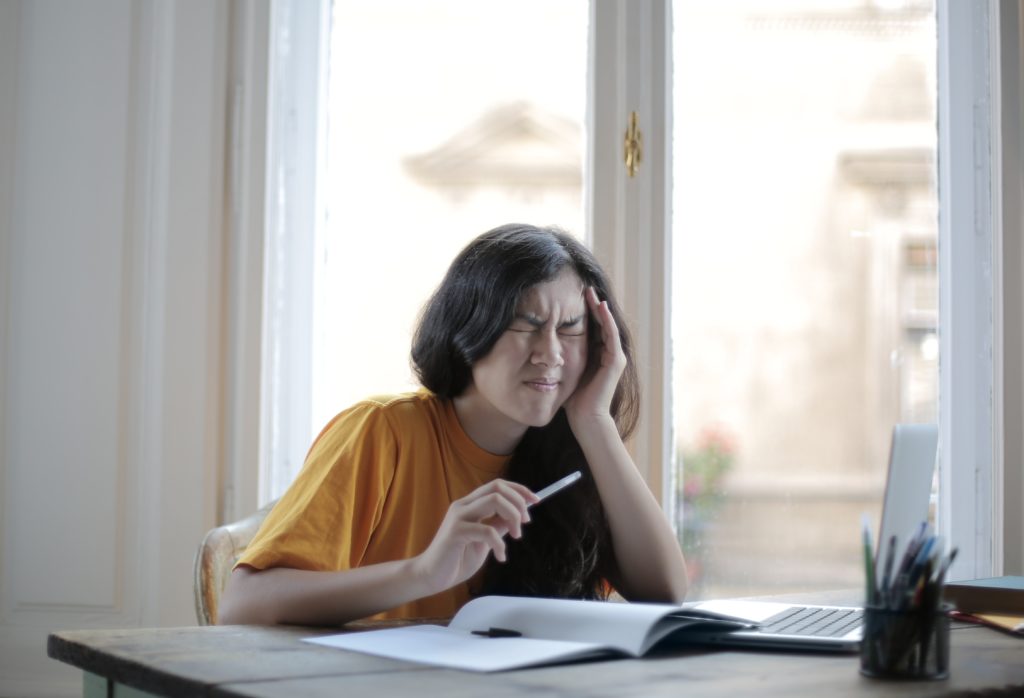
As adults, we can recognize and understand the pains and triggers of our headaches and know how to distinguish and address them. Children who suffer from headaches, and migraines in particular, are more challenged in conveying the feelings and fears that severe headaches can stir up.
Migraines in children are more common than you might think. “Ten percent of school-age children suffer from them, and up to 28 percent of adolescents have them,” says Dr. Sommer Ebdlahad, a neurologist at the Virginia Spine Institute. Half of migraine patients will have their first attack by age 12, although they can occur as early as 18 months, he explains.
Headache or migraine?
How can kids (or their parents) tell a migraine from a regular headache? Ebdlahad says that migraine pain will feel more severe, throbbing and longer-lasting. Additional neurological symptoms include sensitivity to light, sound, odors and touch; blurred vision; nausea and vomiting; fatigue; and dizziness. Physical activity can exacerbate these symptoms.
Parents can also be on the lookout for complaints of abdominal pain and behavioral or mood changes. “Kids may complain of not being able to concentrate, not wanting to do homework or school activities, not feeling like they want to hang out with friends or do other fun activities,” says Ebdlahad. Fear and anxiety from anticipating repeated migraines is also very distressing.
At what point should doctors intervene? “Patients should see a doctor once the migraine becomes something that affects their quality of life,” says Ebdlahad. Even if it’s just one migraine a month—if it’s severe enough to cause limitation, it’s time to seek medical treatment.
Childhood interrupted
At her worst, 15-year-old Maddie Duke of Springfield, Virginia, was having almost 20 migraines a month. They began when she was 10 and intensified between the ages of 12 and 14.
“I was having to leave school, dance class and events with my friends because of them,” she recalls. “They would make me vomit, get nauseous and really dizzy. My mom says she could tell when it was happening because my skin also turned from pink to greenish grey.”
Duke’s migraines also made her so exhausted that she often had to sleep them away.
Migraine triggers
It took about five years for Duke to get a handle on her migraines, which her doctors said were being caused by a combination of genetic, hormonal, environmental and lifestyle factors.
Ebdlahad says the most common triggers of migraines in children are “stress, hormones in girls, skipping meals, being dehydrated, too much caffeine or withdrawal from it, an irregular sleep schedule and changes in weather.”
A child’s odds of getting migraines is greater if an immediate family member has them, but today’s lifestyle can also increase their occurrence. High stress leads to more migraines, explains Ebdlahad—“Seventy percent of migraine patients note stress as a trigger,” he says—as well as blue light from screens, artificial sweeteners, caffeine and other substances.
Management options
The best way to handle migraines in children, explains Ebdlahad, is trigger avoidance. Keep a migraine diary and identify the circumstances around the them—a poor night’s sleep, a stressful day, a particular meal—and then work to avoid those triggers as much as possible.
Another option is medication. However, while some prescriptions can safely treat migraine pain and nausea in children older than 6, “lots of adult migraine medications are not FDA-approved for children and may have side effects,” says Ebdlahad. He recommends less harmful supplements like riboflavin and melatonin when medications are needed.
Duke says she’s had the most success with holistic measures, which often prove the best way to manage migraines in children, according to Ebdlahad. Per doctor’s orders, Duke now does 30 minutes of cardio 3-5 times a week, eats three full meals every day and follows a strict sleep schedule, getting 8-10 hours of shuteye every night. “I try very hard not to deviate more than 2 hours on that—even on weekends,” she says.
Staying hydrated has also been helpful. Duke drinks 60 ounces of water and 40 ounces of a liquid with electrolytes every day.
“I’m also doing cognitive behavioral therapy and that’s helping me understand and figure out the mind-body connection with my migraines,” she says.
Duke, who doesn’t take any specific migraine medicine, now gets them fewer than 2-3 times per month. Although they are around the same severity as before, she says she is more confident in knowing how to deal with them.
Working together with her parents and doctors helped Duke get on the road to relief. “It’s been amazing to see how some pretty simple lifestyle changes can make such a big difference in how I feel,” she says. “I really do have my life back now.”







